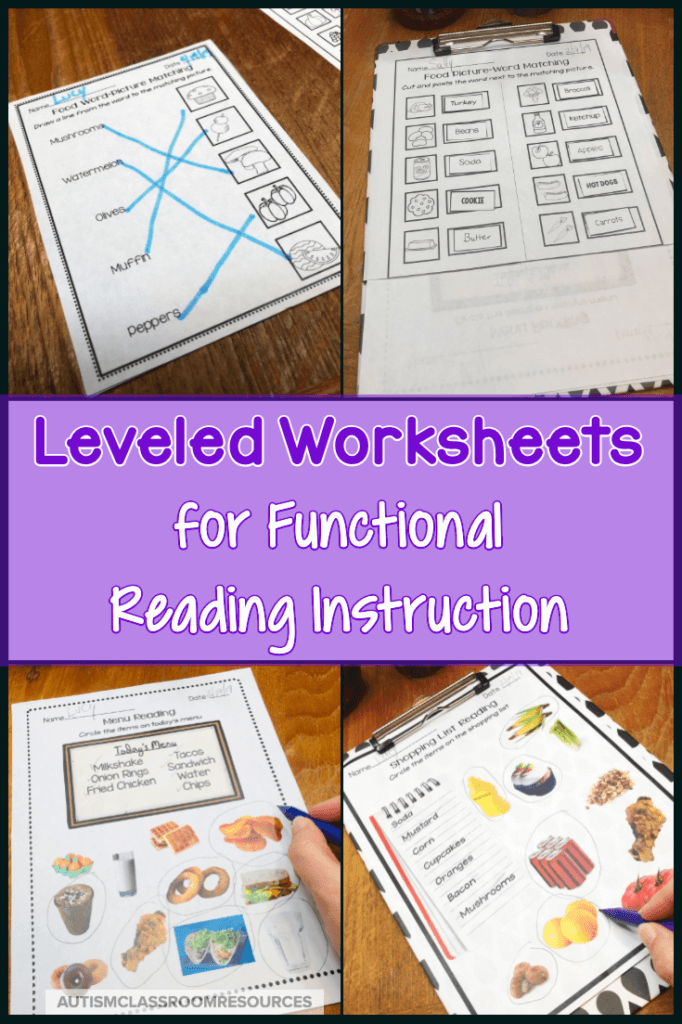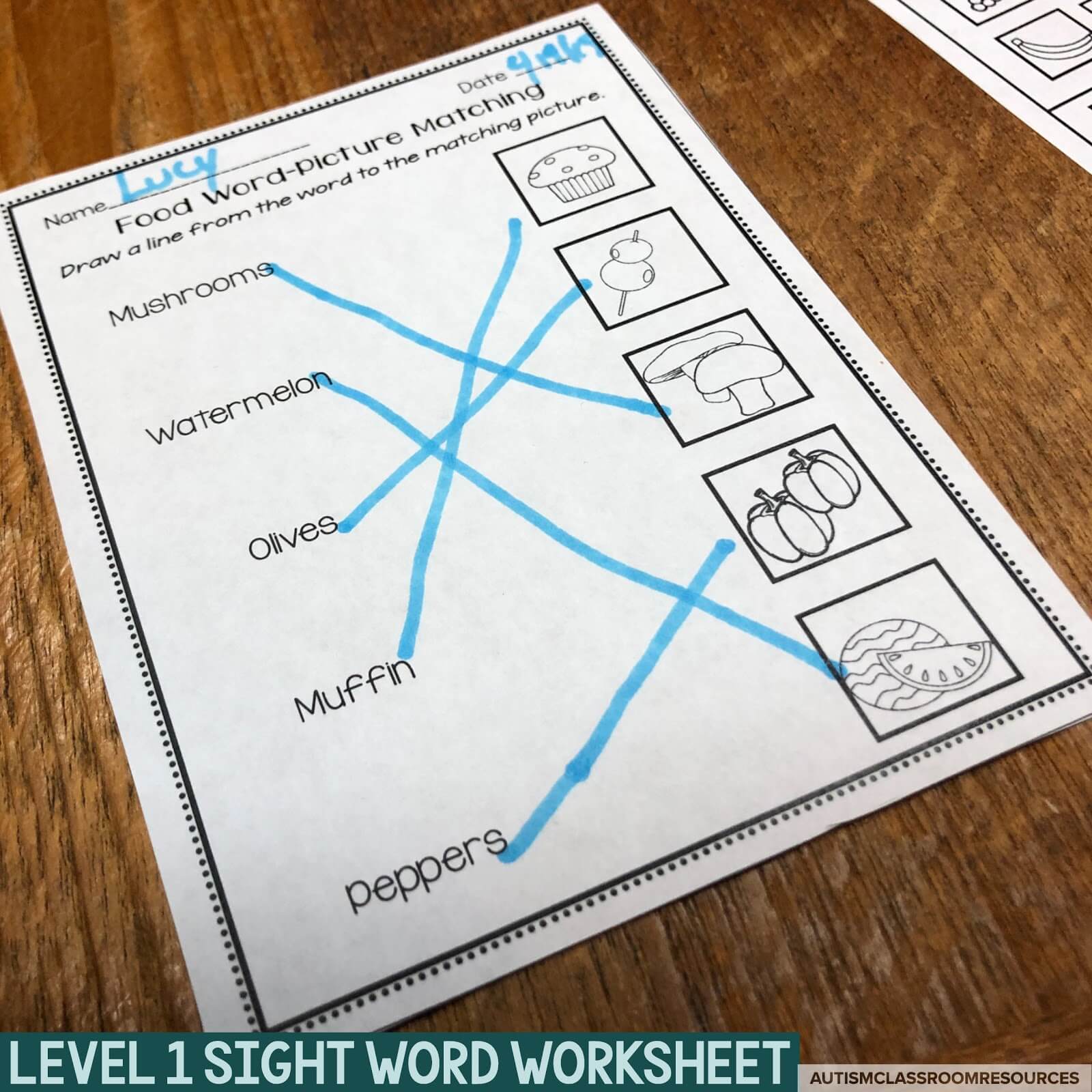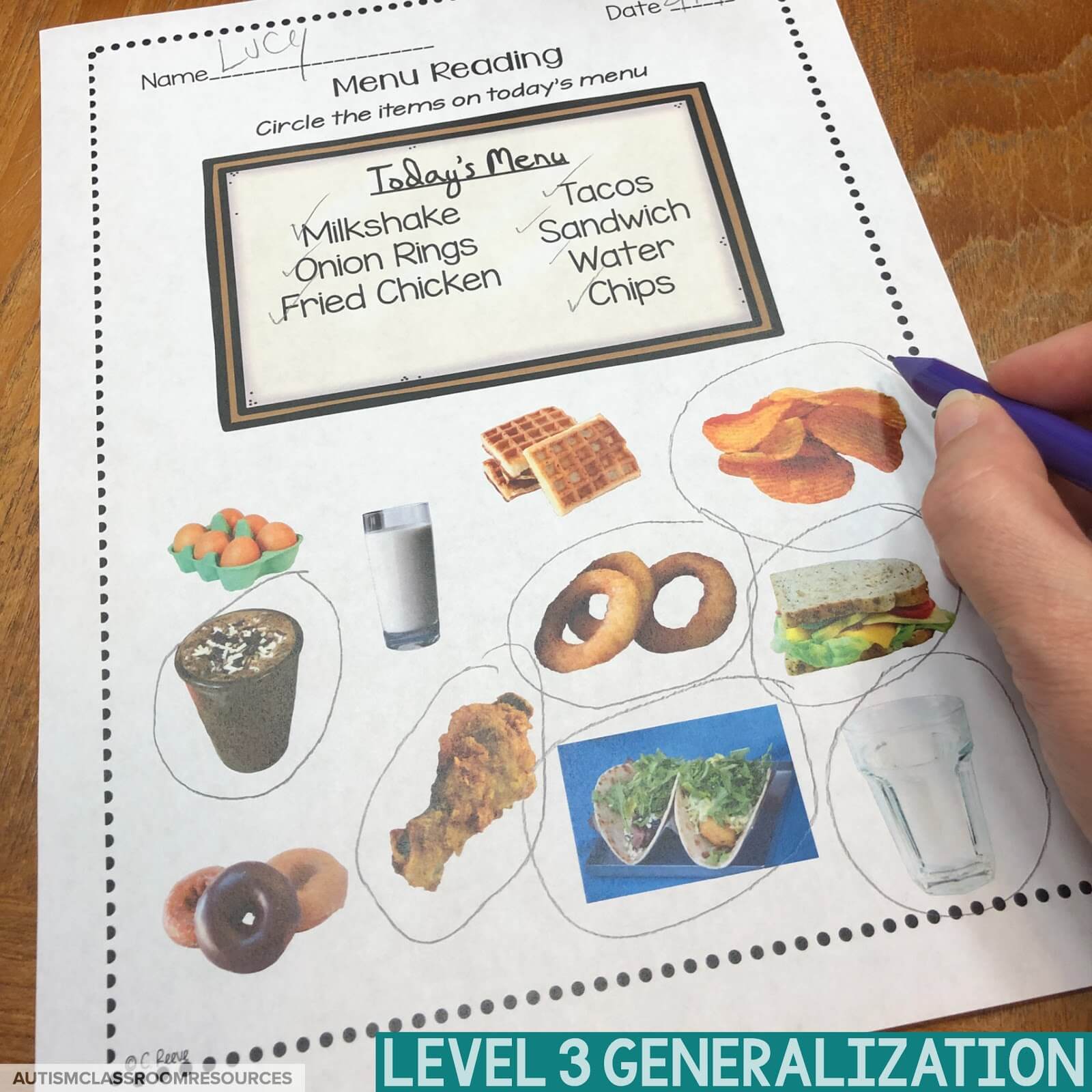

These functional reading worksheets are great for life skills classrooms. I know that finding engaging and useful ways to practice functional reading, particularly comprehension, can be tough. So, I’ve set out to create a set of tools that allow you to scaffold your instruction of functional sight words commonly encountered by our students in their community. I’m starting with food words. So far we have functional sight word task cards for word identification, BINGO for practicing word recognition, leveled worksheets for practicing basic reading comprehension, and file folders (or task cards) to practice matching written words to pictures.
These leveled worksheets can help you reinforce functional reading comprehension of common grocery and restaurant words in your classroom. And I have tips for using lots of materials to reinforce that reading comprehension of functional words. The 3 levels of the worksheets can be used to differentiate among your students or you can use them as a teaching sequence.

In Level 1, the students simply match the sight words to the picture. They use basic matching of word to picture to demonstrate understanding.
These worksheets will work well for practicing a small set of words (only 5 per page) as you are teaching sets of words to the students. You can also use them as a basic level, while using the other levels for students with more advanced skills.
The set includes 20 of these worksheets, all in black and white with clip art pictures for easy copying. The words are written with capitals and in a clear, consistent font.
In Level 2, the students move up a step to 10 words on a page. Students need to match or write the word next to the corresponding picture. There are 10 of these worksheets included in the set.
 are great for students who can cut and paste or those who can write in the answers with or without a word bank. Perfect for differentiating among the wide range of skills you have in your classroom. Find out more about them and how they can save you time in this post." width="858" height="449" />
are great for students who can cut and paste or those who can write in the answers with or without a word bank. Perfect for differentiating among the wide range of skills you have in your classroom. Find out more about them and how they can save you time in this post." width="858" height="449" />
Your students can demonstrate their knowledge in 4 different ways dependent upon the skill of the student and the goals you are addressing.
There are 2 types of worksheets in Level 3. They are designed to mimic two ways that students will often see these words in the community: a grocery list and a restaurant menu. Students must circle the pictures of items on the menu or the list.


There are 12 grocery store worksheets and 10 restaurant worksheets. They are in color and use real photos of foods. Consequently I would usually laminate them and use sheet protectors in order to avoid having to print them repeatedly.
So these 3 levels of difficulty of practicing functional reading of food sight words are a great way to begin moving to paraprofessional-directed instruction to practice the skills. They also work well to put in independent work systems for students to generalize and maintain the reading skills. Finally they could be used for a morning review or other group activity by putting the worksheets on a projector or document camera and having the students either raise word cards as response cards or calling out the word.
To take the next step from the worksheets, consider using the shopping lists with a mock grocery store or on a community outing to the neighborhood grocery store. You can do the same thing with menus by using printouts or online versions of local take-out menus.
Have the students find the items on the list in the grocery store. Or have them find them online at the grocery store website or find the words on a restaurant menu on a website. Just cut the list out of the worksheets or leave the picture cues there for them. This strategy helps them to integrate their knowledge into everyday life.
And finally, one of the things I love about worksheets is that they eliminate the need for extensive data collection. Just grab a permanent product label (#2), complete it and put it on the back and you have a work product to use for your data collection.
 practical ways for working on functional reading comprehension with sight words is tough for life skills teachers. Leveled worksheets to the rescue. They can save you time in prep as well as in data collection. And they scaffold your instruction and allow for easy differentiation. Check out what they offer in this post." width="630" height="354" />
practical ways for working on functional reading comprehension with sight words is tough for life skills teachers. Leveled worksheets to the rescue. They can save you time in prep as well as in data collection. And they scaffold your instruction and allow for easy differentiation. Check out what they offer in this post." width="630" height="354" />
Coming up next in this series will be interactive books with the same words to work on using the words in connected text. And I’ll also be developing flash cards and discrete trial materials for explicit instruction as well as other supportive tools.